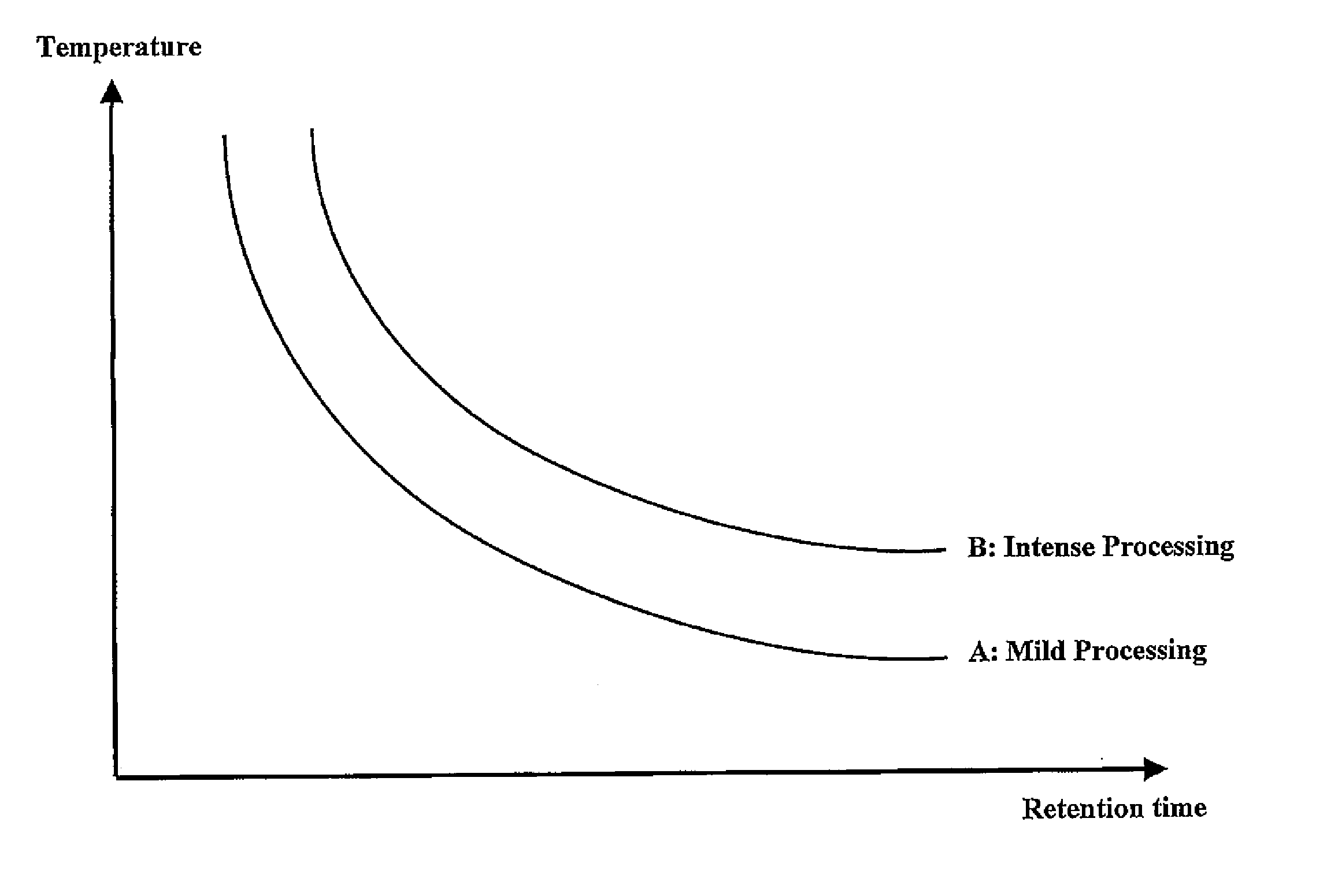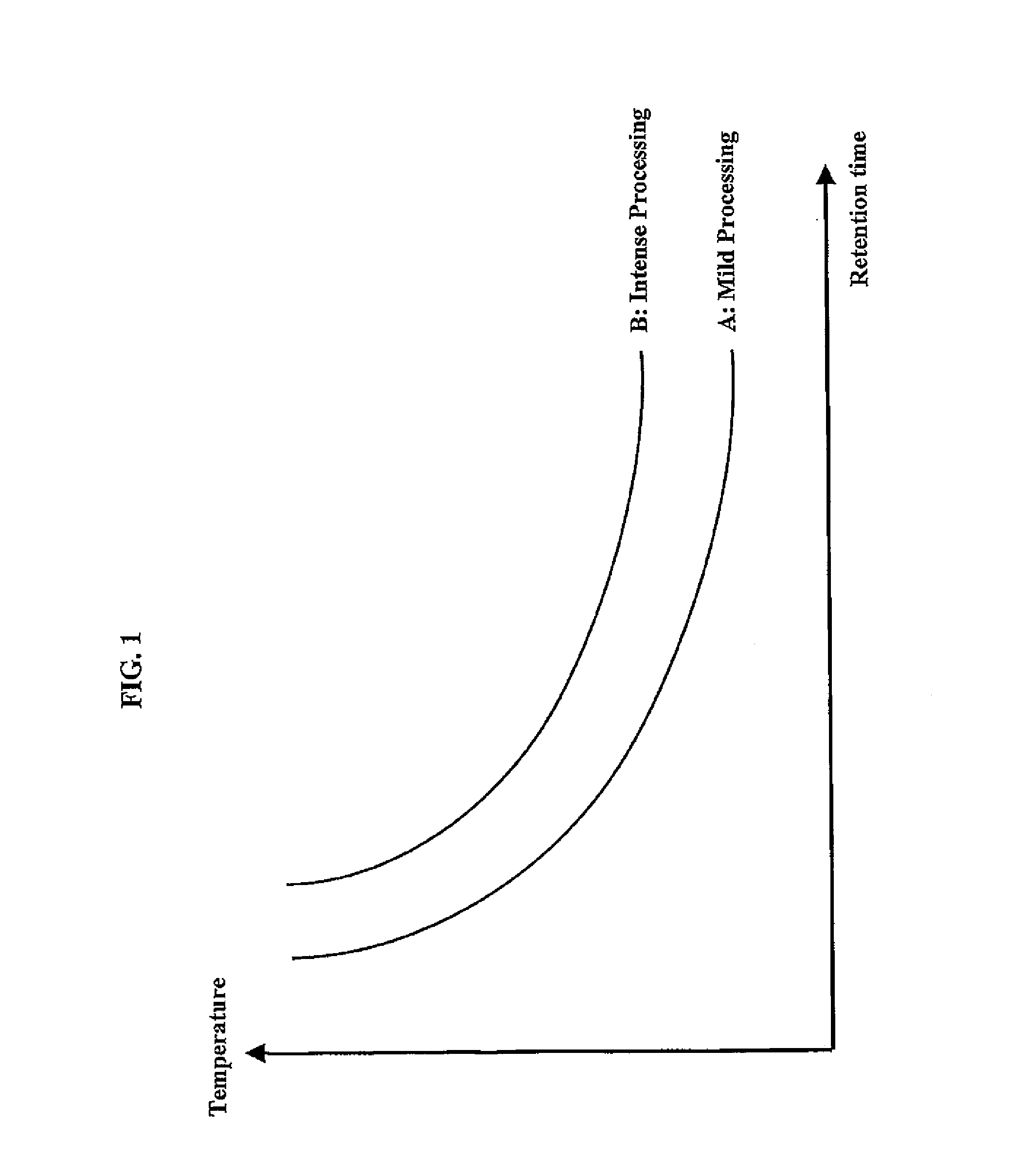Method for the production of pellets or briquettes
a technology of briquettes and pellets, which is applied in the field of pellets and briquettes production, can solve the problems of insufficient moisture for defibration at lower moisture levels, insufficient steam explosion of force, and inability to add chemicals, etc., and achieves the effects of high energy concentration, high quality, and high outpu
- Summary
- Abstract
- Description
- Claims
- Application Information
AI Technical Summary
Benefits of technology
Problems solved by technology
Method used
Image
Examples
examples of embodiments
[0066]The raw materials may be any kind of lignin containing material. Raw materials that have not been dried artificially or naturally normally have a relative moisture content of about 45-55% by weight, while naturally dried raw materials have a typical relative moisture content of about 15-35% by weight, or even about 28-35% by weight.
[0067]An advantageous method according to the invention includes the following steps:[0068](a) Raw materials with a relative moisture content of more than about 30%, alternatively more than about 20% by weight are dried to a relative moisture content of about 0-30%, alternatively about 0-20% by weight. This is done typically as direct drying in a drum dryer into which flue gases are injected, but other drying methods may also be used.[0069](b) The raw materials are then passed from the drying step directly, or optionally after intermediate storage, to a reactor in which the raw materials are heat-treated, optionally steam-exploded. This takes place ...
PUM
| Property | Measurement | Unit |
|---|---|---|
| length | aaaaa | aaaaa |
| length | aaaaa | aaaaa |
| particle size | aaaaa | aaaaa |
Abstract
Description
Claims
Application Information
 Login to View More
Login to View More - R&D
- Intellectual Property
- Life Sciences
- Materials
- Tech Scout
- Unparalleled Data Quality
- Higher Quality Content
- 60% Fewer Hallucinations
Browse by: Latest US Patents, China's latest patents, Technical Efficacy Thesaurus, Application Domain, Technology Topic, Popular Technical Reports.
© 2025 PatSnap. All rights reserved.Legal|Privacy policy|Modern Slavery Act Transparency Statement|Sitemap|About US| Contact US: help@patsnap.com


